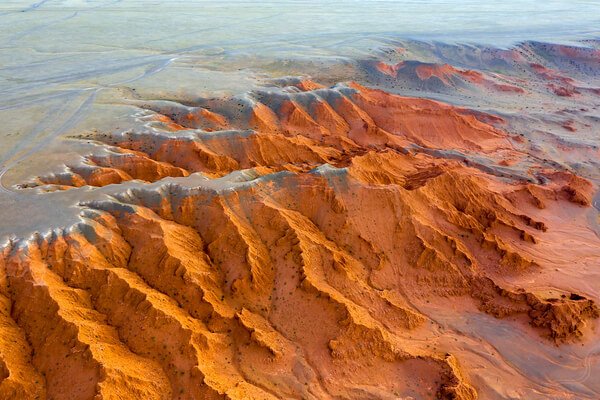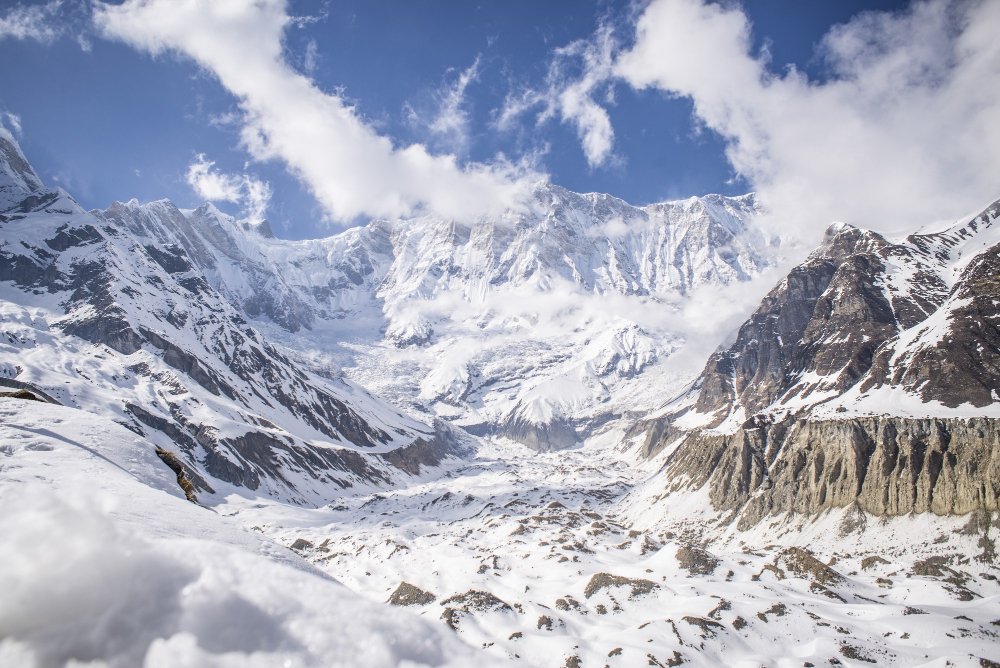
The world’s largest deserts are vast and unforgiving landscapes. However, they are also home to a variety of unique plants and animals, and they play an important role in the global climate system. By understanding these deserts and the challenges they face, we can help to protect them for future generations. Certainly, deserts are some of the Earth’s most intriguing and unique environments. Here, we will explore the top five largest deserts in the world, providing comprehensive explanations for each.
- Sahara Desert
- Arabian Desert
- Gobi Desert
- Kalahari Desert
- Great Victoria Desert
You might like: Top 5 highest mountains in the world
1. The Sahara Desert
The Sahara Desert is the world’s largest hot desert, covering an immense area of approximately 9.2 million square kilometers (3.6 million square miles). It spans across North Africa, encompassing parts of Algeria, Chad, Egypt, Libya, Mali, Mauritania, Morocco, Niger, Sudan, and Tunisia. The Sahara’s name, derived from the Arabic word for “desert,” is indicative of its vastness.

The Sahara is characterized by its arid and relentless landscape, featuring endless sand dunes, rocky plateaus, and oases. It is known for the towering dunes of the Erg Chebbi and the dramatic landscapes of the Tassili n’Ajjer plateau, which is adorned with ancient rock art.
Despite its harsh conditions, the Sahara has a rich history, serving as a crossroads for ancient trade routes and being home to numerous indigenous cultures. It presents challenges and opportunities, with its sands holding vast potential for solar energy generation.
The Sahara’s climate is extreme, with scorching temperatures and minimal precipitation. However, there are occasional bursts of life when rare rain events transform the desert into a blossoming landscape, demonstrating the remarkable resilience of life in one of the harshest environments on Earth.
2. The Arabian Desert
The Arabian Desert is the largest continuous desert in the world, covering an area of about 2.3 million square kilometers (900,000 square miles). It is situated in Western Asia, encompassing parts of Saudi Arabia, Yemen, Oman, the United Arab Emirates, Kuwait, Jordan, and Iraq.

The Arabian Desert is notable for its iconic red sand dunes, vast stretches of sand, and gravel plains. The Rub’ al Khali, or the Empty Quarter, is a massive sand desert within the Arabian Desert, known for its towering dunes and barren beauty.
Unlike some other deserts, the Arabian Desert experiences significant temperature variations between day and night. It is also home to various wildlife, including camels, gazelles, and desert foxes. Humans have inhabited this desert for centuries, with desert oases and ancient trade routes connecting different regions.
The Arabian Desert is not only rich in cultural history but also holds vast reserves of oil and natural gas, which have transformed the economies of the countries that share this arid landscape.
3. Gobi Desert
The Gobi Desert is Asia’s largest desert, covering an area of approximately 1.3 million square kilometers (500,000 square miles). It stretches across northern China and southern Mongolia. The Gobi is unique because it is a cold desert, experiencing harsh winters with extreme cold and summers with scorching heat.

The Gobi Desert is known for its diverse landscapes, including expansive sand dunes, rocky outcrops, and gravel plains. It is home to the elusive Gobi bear, wild Bactrian camels, and other unique desert-adapted wildlife.
The region has a rich history as part of the ancient Silk Road trade route, where camel caravans transported goods across the vast desert expanse. The Gobi is also famous for its dinosaur fossils, with the first discovery of dinosaur eggs dating back to the 1920s.
In recent years, the Gobi Desert has attracted attention as a location for renewable energy projects, particularly in the form of wind and solar energy. This arid landscape offers vast potential for harnessing clean energy resources.
4. Kalahari Desert
The Kalahari Desert is a vast semi-arid desert that covers approximately 900,000 square kilometers (350,000 square miles), spanning across parts of Botswana, Namibia, and South Africa. Unlike some other deserts, the Kalahari receives slightly higher annual rainfall, which supports a unique ecosystem.

The Kalahari is known for its striking red sands, which give the desert a distinct and picturesque appearance. It is a region of sandy plains, salt pans, and rolling dunes, providing habitat for a variety of wildlife, including the Kalahari lion, cheetah, and meerkats.
This desert is home to indigenous San people, who have adapted to the desert’s challenging conditions and have a rich cultural heritage. The Kalahari’s ecosystems are highly sensitive to changes in rainfall, and the desert experiences periodic cycles of drought and relative abundance.
Despite its semi-arid nature, the Kalahari Desert is a place of natural beauty and is a popular destination for ecotourism, offering opportunities for wildlife viewing and experiencing the unique cultures of the San people.
5. The Great Victoria Desert
The Great Victoria Desert is Australia’s largest desert, spanning an area of approximately 647,000 square kilometers (250,000 square miles). It is located in the southwestern part of Australia, straddling the border of Western Australia and South Australia.

The Great Victoria Desert is characterized by vast sand dunes, salt lakes, and sparse vegetation. It is home to an array of unique wildlife, including the thorny devil, bilby, and the marsupial mole.
Indigenous people, such as the Pitjantjatjara and Yankunytjatjara, have lived in the region for thousands of years and have a deep connection to the land. The desert has also been an important location for nuclear tests, with several test sites established in the mid-20th century.
The desert’s climate is marked by extreme temperature variations, from scorching heat during the day to cold nights. Despite its remote and harsh nature, the Great Victoria Desert is a place of natural beauty and offers a unique opportunity to experience the stark and mesmerizing landscapes of the Australian Outback.
Other largest deserts in the world are:
- Arctic Desert, Arctic Region
- Antarctica, Antarctica
- Patagonian Desert, South America
- Atacama Desert, South America
- Sonoran Desert, North America



